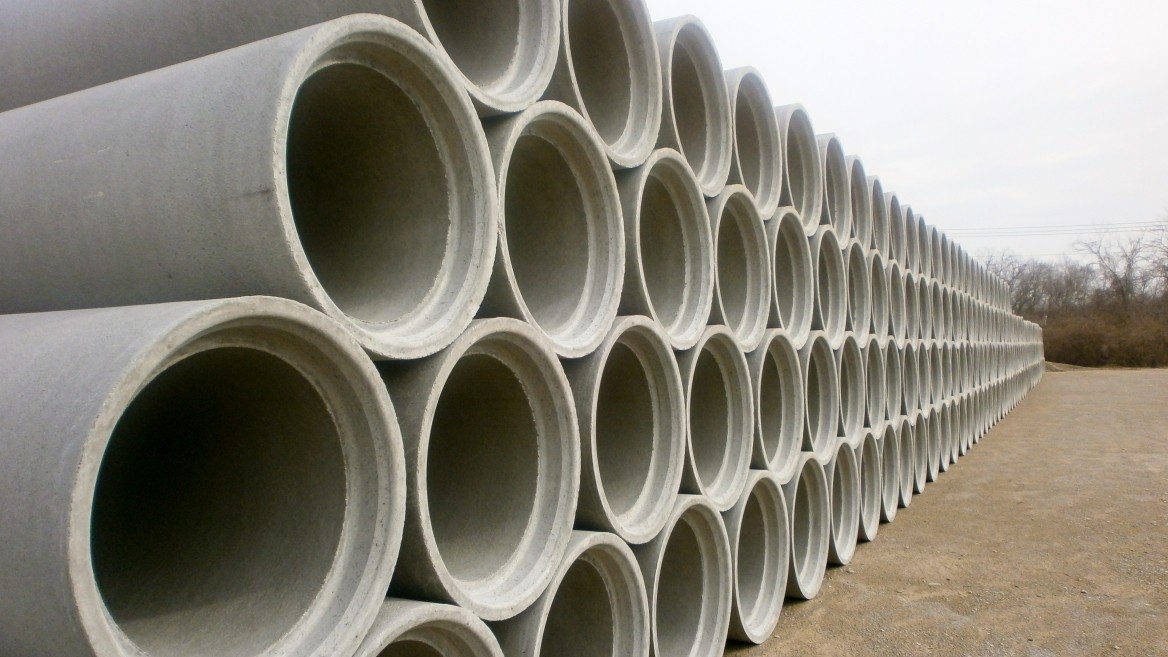Flowing Forward: Navigating the Complexities of Sewer Rehabilitation
In an era marked by increasing urbanization and the need for sustainable solutions, the water sector stands at a critical crossroads and the implications are monumental: How do we modernize and rehabilitate the aging water infrastructure in North America to ensure the continued supply of clean water for our growing population? This question underscores the urgency and importance of embracing innovative approaches that offer both durability and cost-effectiveness. This whitepaper reflects the real-world experience of wastewater engineers who have confronted the complex issues surrounding sewer rehabilitation and experienced the transformative potential of various technologies.
The Dynamic Landscape of Sewer Rehabilitation
Sewer rehabilitation projects pose a myriad of challenges for municipalities and government agencies, each requiring a nuanced approach to be successful. The fundamental question of whether to excavate or utilize non-excavation methods sets the stage for project planning. But there are other, extensive considerations that must be addressed. Factors like social and economic impacts, environmental concerns, historic features, and archaeology, influence the approach to be taken when rehabilitating infrastructure. And, in addition to these considerations, sewers often cross natural watercourses, private properties, and urban areas. Taken together, this unique set of challenges demands solutions that are not only technically sound, but also socially and environmentally responsible.
One core tenet is the importance of informed decision-making. An effective rehabilitation strategy begins with a comprehensive understanding of the specific challenges posed by the project. Such an approach ensures that the chosen technology aligns with the nature of the damage to the infrastructure as well as with factors like access, available timeframes, and environmental considerations. As shown in real-world case studies, taking the time to evaluate the unique circumstances of each project can yield solutions that are both cost-effective and sustainable.
Selecting the Right Technology: A Strategic Approach
There is a crucial process of selecting the appropriate rehabilitation technology. This decision is multi-faceted and requires a thorough evaluation of various criteria:
Pipe Condition: Understanding the current state of the pipe is essential in determining whether a structural or non-structural approach is warranted.
Pipe Geometry: The shape and diameter of the existing pipe influences the choice of technology, as some methods are better suited to certain geometries.
Depth and Access: The depth of the pipe and the ease of access impact the feasibility of different rehabilitation methods.
Flow Management: Maintaining the flow of sanitary sewage during rehabilitation presents a challenge that needs careful consideration.
Existing Site Conditions: Urban environments, historical sites, and adjacent structures demand tailored approaches to minimize disruptions.
Permitting Requirements: Regulatory approvals from conservation authorities and government agencies are critical in ensuring compliance with environmental regulations.
Material Availability: In a world where resource scarcity is a concern, the availability of materials needed for a rehabilitation project can significantly impact project feasibility.
Cost and Schedule: These considerations often go hand in hand and can influence the viability of a particular rehabilitation method.
Moratoriums and Urgency: Awareness and adherence to “no work” requirements and schedules driven by factors such as environmental guidelines, recent road improvements, and daily/seasonal high-usage time frames may necessitate or limit certain choices.
Capacity Impacts: Understanding how different methods affect the capacity of the sewer system is crucial for long-term planning.
Pairwise Analysis: A Decision-Making Tool
To support the identification and selection of an optimal rehabilitation technology, engineers can employ a collaborative approach known as a Pairwise Analysis that includes participation from the project stakeholders. This technique involves assigning weights to each criterion based on its relative importance. For instance, factors like cost, duration, and capacity impacts might be weighted differently based on the project's goals. By assigning scores to different technologies against each criterion and applying the weights, a comprehensive evaluation matrix is generated. This matrix provides a clear visualization of how different technologies align with the project's goals, enabling engineers and decision-makers to make informed choices that align with their priorities and can lead to a successful project.
Exploring Rehabilitation Technologies
Traditional methods for infrastructure rehabilitation often fall short in the face of modern challenges. The consequences of these shortcomings are evident: corrosion, leakage, and deterioration are potential problems across water systems and can undermine their reliability and efficacy. Yet, emerging technologies, propelled by scientific advancements and industry experience, hold the key to revolutionizing the way we rehabilitate water infrastructure. Some of the commonly used sewer rehabilitation technologies, including their strengths and considerations, include:
Cured-in-Place Pipe (CIPP): A seamless rehabilitation method using resin-impregnated liners, CIPP offers a jointless solution for pipelines. Factors like diameter, staging areas, and bypass requirements influence its suitability.
Slip Lining: This approach involves the insertion of a smaller pipe into a larger one and can be effective for structural rehabilitation. Alignment changes and pipe geometry play a role in its feasibility.
Spiral Wound Lining: This technique creates a liner within the pipe, using interlocking PVC or HDPE strips. Its adaptability to various geometries makes it versatile.
Fold-and-Form Lining: Ideal for smaller pipes, this method uses flattened or folded PVC or HDPE piping. It offers a balanced approach between ease of installation and capacity impact.
Geopolymer Coating: A high-strength mortar, geopolymer is applied as a liner. Its corrosion resistance and durability traits make it a powerful solution.
Epoxy Coating: Offering a range of applications, epoxy coatings provide structural or non-structural solutions with high corrosion resistance.
Carbon Fiber Reinforced Polymer (CFRP): This technique involves layering carbon fiber material and epoxy resin. It's a versatile solution for a variety of structural needs.
Pipe Bursting: Although technically a replacement method, pipe bursting can be considered because of its trenchless approach. Its suitability depends on factors like alignment and utility proximity.
Technology and Innovation: The Stars of the Show
There is an array of cutting-edge technologies that are reshaping the water infrastructure rehabilitation landscape. As mentioned above, one of these is the Fold and Form system, a solution that employs heat and tension to reshape existing pipes. Although it was initially met with skepticism due to technical challenges, recent successes underscore its potential as a sustainable, cost-effective rehabilitation tool. Similarly, the advent of Glass Reinforced Plastic (GRP) panel liners is also a valuable addition to the engineer's toolkit. The GRP approach's flexibility and adaptability of the GRP approach have been leveraged in projects involving pipes with complex geometry, showcasing its potential for tackling unique rehabilitation challenges.
Embracing Environmentally Friendly Solutions
In the age of environmental consciousness, water engineers are placing a premium on solutions that not only address structural issues but also uphold ecological integrity. One notable example involves a sewer rehabilitation project that was thoughtfully designed to minimize disruption to the local ecosystem. Choosing the right materials and developing a careful execution strategy ensured that environmental considerations were central to the project’s success. Such projects stand as a testament to the industry's commitment to both infrastructure and environmental sustainability.
The Power of Collaboration
The water engineering community is replete with stories of successful collaborations among engineers, consultants, contractors, and clients. Indeed, assembling the right team can often be the linchpin in the successful delivery of a rehabilitation project. The rehabilitation of a critical feeder main in the Greater Toronto Area, for example, underscores the significance of teamwork. In this instance, engineers, consultants, and contractors worked seamlessly to develop a work plan, execute the repair, and recommission the main — all within a challenging six-month timeline. This example attests to the fact that cross-functional collaboration can lead to creative problem-solving and efficient project delivery.
Advancing Water Infrastructure Through Informed Choices
The realm of sewer rehabilitation is evolving rapidly, offering water engineers an array of innovative tools and methodologies to enhance water infrastructure. But strategic decision-making about the right technology must also be evaluated and carefully balanced against other factors such as project goals, site-specific considerations, and the overall health of the water system.
This whitepaper was originally presented as a continuing education webinar. For more information on the Water Webinar Series, please contact Deborah Veal to receive updates on upcoming webinars. The next continuing education webinar, Key Considerations for Sustainability, Climate Action and Resiliency Planning from Real World Applications, featuring Greeley and Hansen, A TYLin Company, and TYLin experts will be on September 14, 2023.
Contributors: Joe Conti, P.E. | Nathalie McCutcheon, P. Eng. | Tim Healy, P.E.

Joe has more than 25 years of experience with the planning, design, coordination, and management of numerous transmission/distribution and collection/conveyance projects (pressurized systems and gravity systems). He also has significant experience with the implementation of system condition assessment studies and the and subsequent design and implementation of system rehabilitation and repurposing projects (including consent-decree driven projects). Joe has managed sewer system rehabilitation projects for clients in Maryland, Virginia, New Jersey, and Georgia.

Nathalie is the Water Sector Lead for Canada at TYLin with 27 years of experience in municipal and environmental design. She has managed environmental assessments, preliminary and detailed design of water and wastewater projects throughout the Greater Toronto Area. Nathalie was recently involved with the emergency repair of an 1800mm (72inch) diameter transmission main for a key client in the Toronto area. The TYLin team collaborated with the Municipality to undertake a comprehensive and expeditious evaluation of solutions, ultimately selecting the use of Carbon Fiber Reinforced Polymer (CFRP) for the rehabilitation.

Tim has over 18 years of experience in the study, planning, design and construction of wastewater collection system. Tim’s project experience encompasses design and construction of new collection system facilities as well as the rehabilitation and renewal of existing infrastructure. He has managed numerous projects over a range of project delivery methods ranging from more traditional bid to contractor led design build and helped to guide clients through the rehabilitation process including evaluation of new technologies and screening of appropriate technologies for specific project needs.
